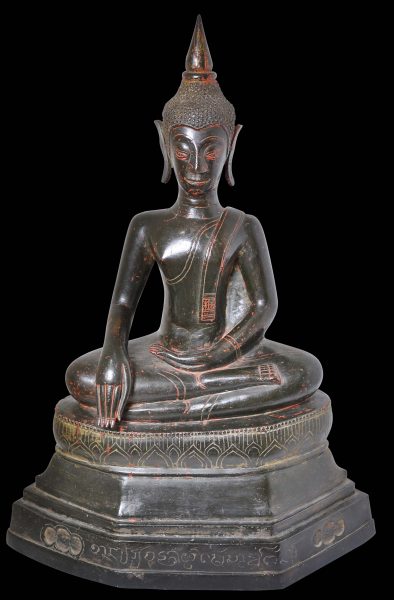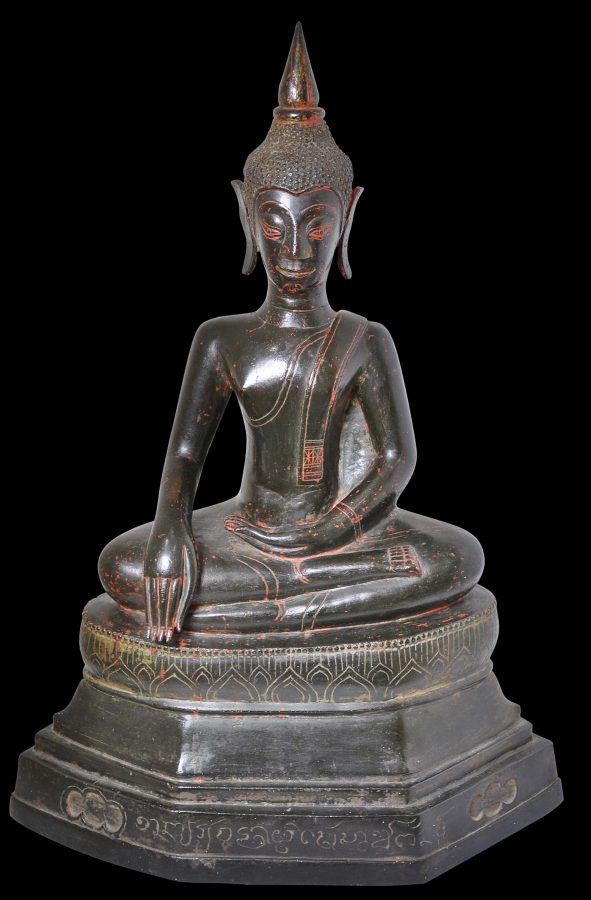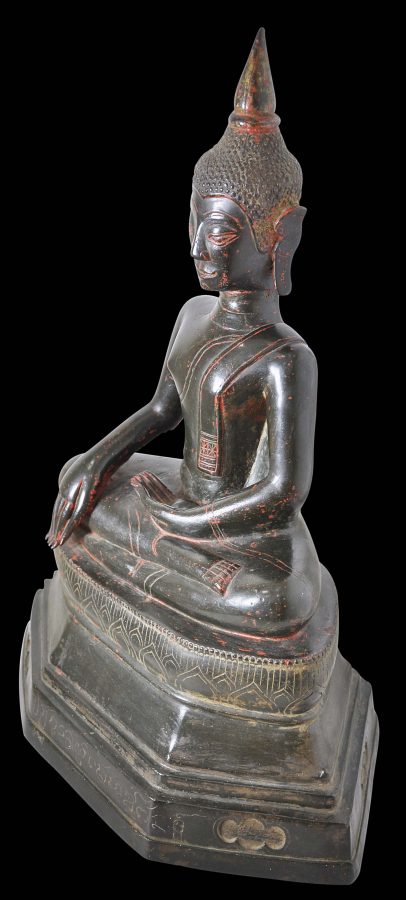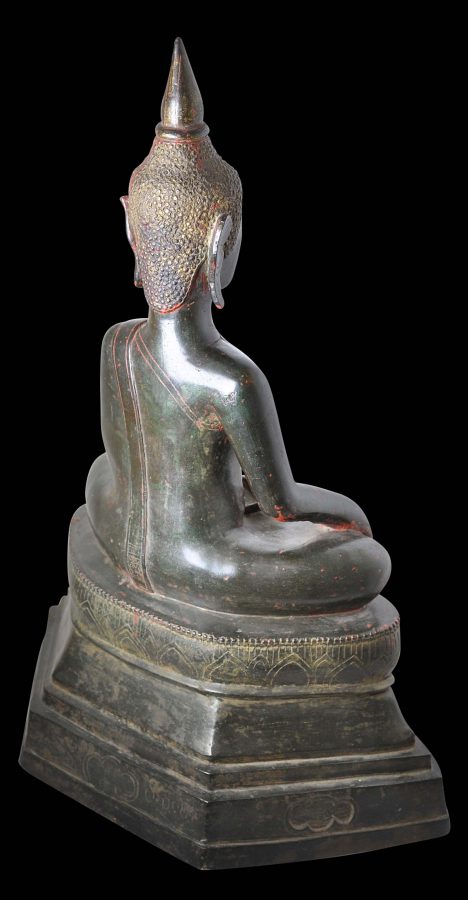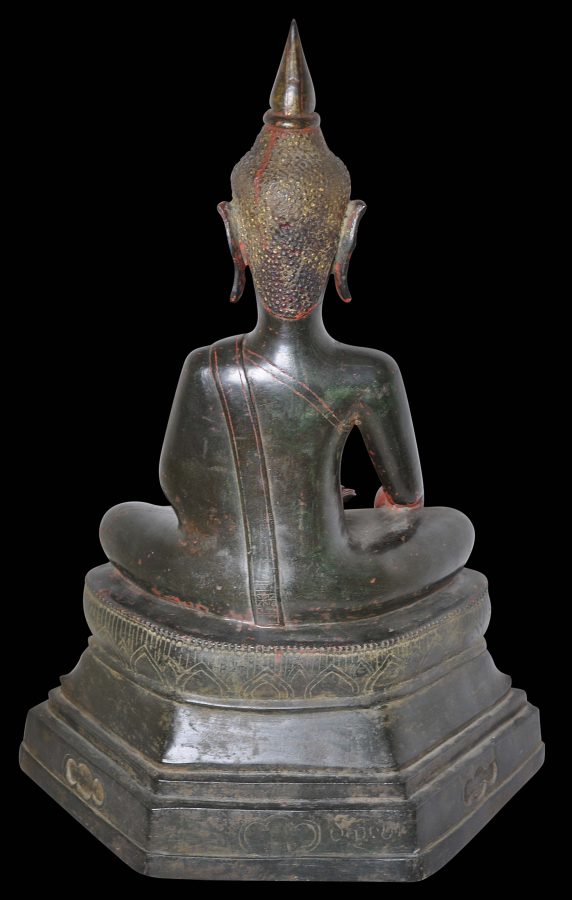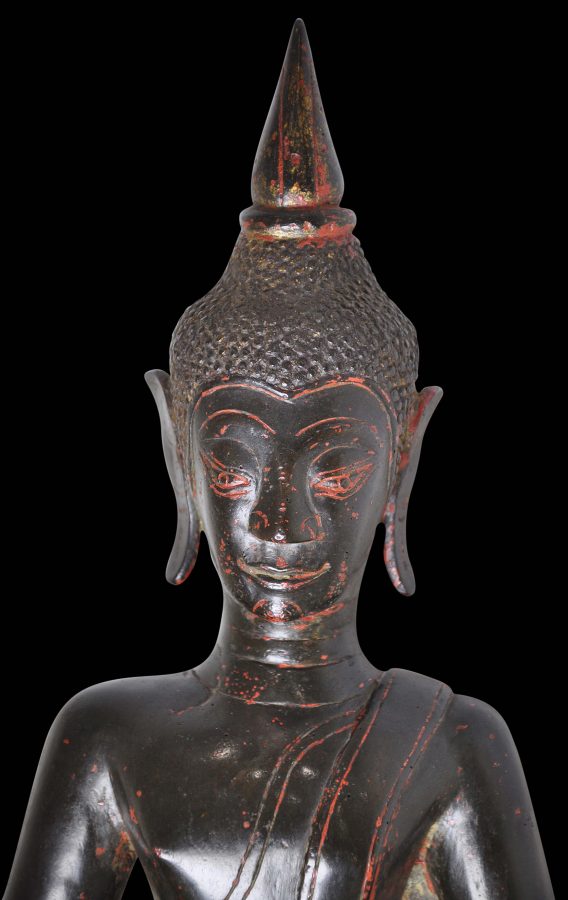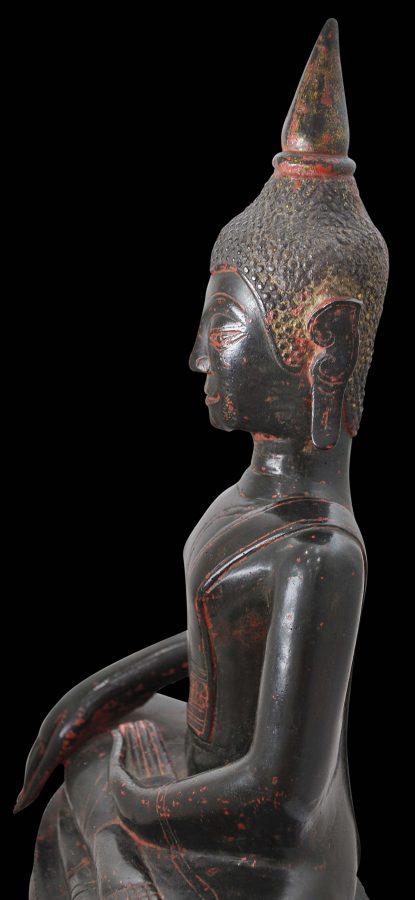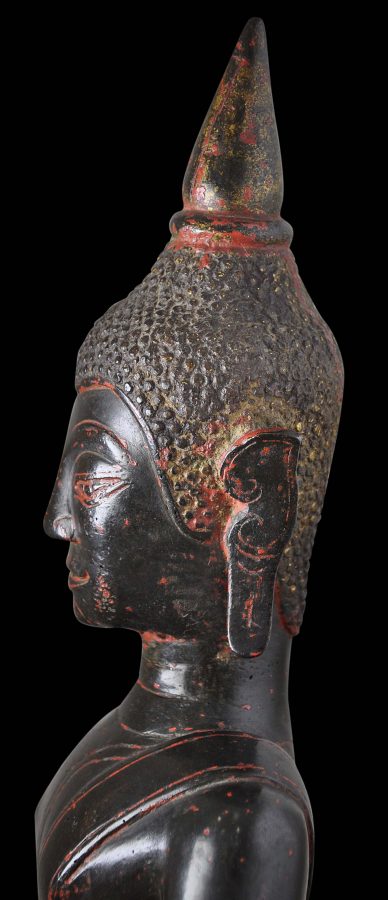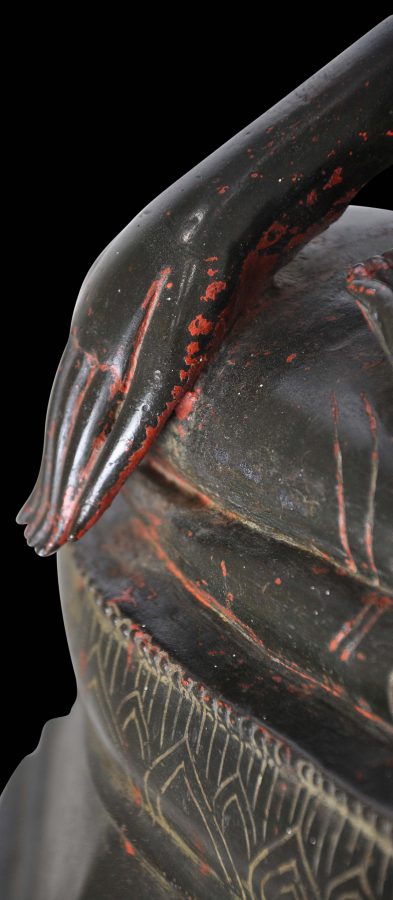Enquiry about object: 3221
Inscribed Lao-Thai Bronze Seated Buddha
Northern Thailand/Laos 16th century
height: 48.5cm
Provenance
collected in the 1950s by Professor Bengt Hager (1916-2011) and Lilavati Devi (c. 1925-2002) of Sweden; thence by descent. Professor Hager was leading researcher on dance and founded the Swedish Dance Museum. Lilavati Devi married Hager in 1954 after first having come to Sweden from India as a principal performer in an Indian classical dance company. The couple travelled extensively in Southeast Asia in the 1950s to study dance, and acquired collectables during these travels including this Buddha.
This museum-quality, fine, cast bronze Buddha image is from Northern Thailand (formerly included as part of the old Lao kingdom), and was collected in the 1950s by a Swedish academic. It shows the Buddha seated cross-legged in bhumiparsimudra.
The Buddha sits in meditation with his left hand, palm upright, resting on his lap, and his right hand touching the earth. This represents the moment of the Buddha’s enlightenment. The moment recalls the incident when the demon king Mara sought to attack the historical Buddha with him demon army while the Buddha was meditating under the bodhi tree. But the Buddha refused to move. The demon king attempted to claim the seat of enlightenment for himself, claiming that his spiritual achievements were greater than the Buddhas. Mara’s soldiers cried out together, ‘I am his witness!’ Mara challenged the Buddha to say who would speak for him? The Buddha reached out his right hand to touch the earth, and declared that the earth itself would be his witness. Mara disappeared and the Buddha reached enlightenment.
The Buddha is shown on a plinth or platform with a flared base. The lower register in inscribed, most probably with a donor(s)’ name. The upper register is engraved with lotus petals.
The Buddha is shown with elongated features. His long, narrow face, broad nose and high hairstyle are typical of Northern Thai bronze Buddhas of the 16th century. He wears a sash over his left shoulder and a robe that reaches to his ankles.
The details have red lacquer highlights.
A related Buddha images with similar facial characteristics is on display in the British Museum, It is dated AD1540-41. It similarly has an inscription around the base which is a dedication of the image to a monastery by three donors, with a wish that they have long lives, gain merit and all attain nirvana.
The image is in excellent condition with a deep and varying patina. It is a superb piece.
References
Woodward, H.W., The Sacred Sculpture of Thailand: The Alexander B. Griswold Collection – The Walters Art Gallery, Thames & Hudson, 1997.


